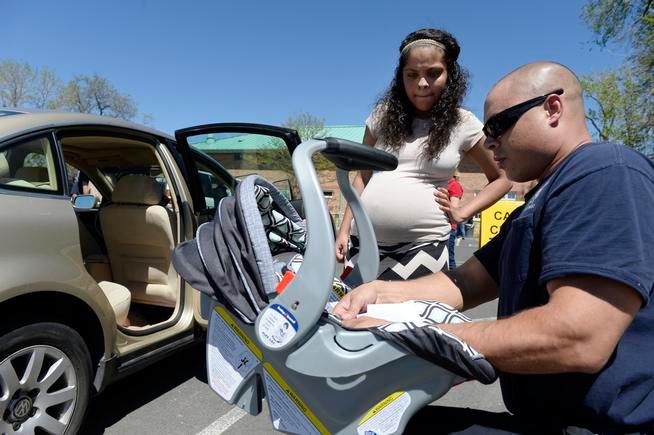Shoppers might be prepared to look for fakes when buying designer handbags at prices that seem a little too good to be true or ordering from sketchy online pharmacies, but when picking out a child car seat?
A Denver technician who makes sure car seats are installed safely said he has seen an increase in seats that don’t meet U.S. safety standards. Some would comply with the rules in other countries, while others likely provide little or no protection in a crash.
In nearly all cases, parents bought the seats online at steep discounts, often from major retailers that allow third parties to sell on their sites, said Fernando San Miguel, a certified child passenger safety technician at Saint Joseph Hospital.
“It’s sad because people are thinking they are getting a great deal, but actually they aren’t,” he said in a news release. “Whoever is making these fake car seats — they are putting kids and babies at risk.”
The best way to avoid buying a counterfeit car seat is purchase it in-person or to buy directly from the manufacturer online, Colorado State Trooper Tim Sutherland said. People who already bought a seat and are concerned can visit CarSeatsColorado.com to find a technician who can verify it meets safety standards, he said.
Some red flags that a car seat may be counterfeit:
- The manufacturer’s label is missing, or doesn’t have all information: Every car seat sold in the United States must have a label with the seat’s name, brand, date of manufacturing, model number and expiration date. Parents can use that information to register the seat so they get notifications of safety recalls.
- Warning labels are missing, or in the wrong language: U.S. regulations require warning labels on the back of the seat and in the area where the baby’s head will go. The warnings must be in English and Spanish. Manufacturers could print the warnings in other languages if they wanted, but typically don’t for the American market.
- Labels are ungrammatical: If the labels or instructions on the seat suggest the person who wrote them wasn’t comfortable with English, the seat likely wasn’t meant for export to the United States.
- The chest clip is missing: Not all countries require a clip holding the straps in the center of the baby’s chest.
- The straps seem thin: Straps should be double-stitched, and a similar weight to a seatbelt.
If you determine you bought a fake car seat, contact the retailer who sold it, San Miguel said. You might be able to get a refund, and the retailer should know so they can ban the seller, he said.
Parents can also report counterfeit seats through StopFakes.gov or the Colorado Attorney General’s Office.
Sign up for our weekly newsletter to get health news sent straight to your inbox.
Originally Published:
